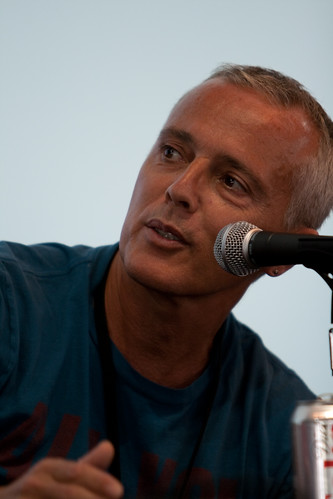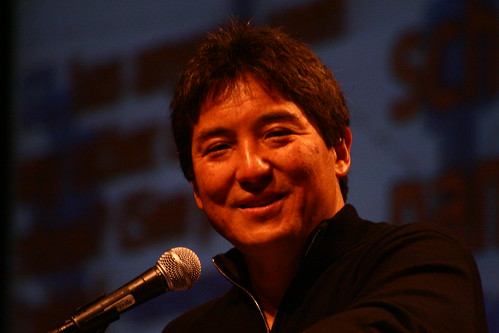
![]() photo credit: Randy Stewart
photo credit: Randy Stewart
After previewing online the two day conference agenda and the speaker roster for the “140 Twitter Conference” in Los Angeles, run by the Parnassus Group, I was hesitant to sign up. Although I really enjoy using Twitter and believe both individuals and businesses of all types can get a lot of benefit from it, the agenda gave me pause to register—it was heavy with a seemingly “entertainment focus”. And my interests primarily center on what I could learn that would best benefit my clients. But I went ahead and registered.
Well, I was very pleasantly surprised. And I was most surprised by Tony Robbins. I really wasn’t looking forward to his day two keynote address. His talk was informative, insightful and yeah—it was pretty motivational. He was supposed to speak from 8:30 am till 10 am. Instead his talk was nearly two and a half hours and he had his audience of 400 business people and Twitter users clapping, jumping, play acting, giving each other massages, and quite mesmerized by his free form talk. He said he was giving the talk for free because he “wanted to give back.”
Robbins views Twitter as an “Intelligent browser that teaches what people say about your brand and is a brief way to connect, share and trigger.” That’s how he says he uses it. Robbins has more than 1.36 million people who follow him on Twitter now—plus one. According to Robbins, “Twitter is the crack of the tech world.”
Other surprises came from the celebrity panel and the musician panel which included a number of power Twitter users including television host Dr. Drew Pinsky, professional skateboarder Tony Hawk, San Francisco Mayor Gavin Newsome, actor Levar Burton, singer Tyrese Gibson, rapper Chamillionaire, musician Mark Nubar, Tears for Fear singer Curt Smith, and comedians Chris Hardwick, Tucker Max and Loni Love. The panelists debated how they used Twitter, what were the right ways to engage their followers, their feelings on letting others “tweet’ for them and whether they should financially benefit directly from the Twitter conversations.
They all agreed that the overriding principle that should be honored on Twitter is “authenticity.” They also agreed to have someone else tweet in your name was dishonest. Chamillionaire talked about how “Twitter can be an active conversation.” He likes to start arguments on his account and enjoys lively debating his followers over who is the best athlete of all time—Michael Jordan or Kobe Bryant.

![]() photo credit: Randy Stewart
photo credit: Randy Stewart
Curt Smith likes to use Twitter not primarily for pitching his music but for engaging others to talk about politics, his kids and everyday life. Curt is now working on a song with someone that he met on Twitter. What he seems to enjoy most about Twitter is its ability to let him be direct and not have his words translated by a record label or a reporter. Levar Burton mirrored Smith by explaining that for him, “Twitter has created an environment that is absent the gatekeepers ad it has leveled the playing field.”
For Mark Nubar, “Twitter’s elegance lies in its simplicity. I love its 140 characters.” Mark also spoke about his band’s evolution with social media, “MySpace was the gateway to Facebook and now Twitter. We now have a global family. My band would not be alive without social marketing.”
Tony Hawk believes that what he learns from Twitter about his own brand is “the best focus group.” For Mayor Newsome, Twitter marks “the beginning of the end of how things have been done with governing. Twitter is changing the world of government. We want to lead the world. It’s about government 3.0 not just 2.0. ”
What was impressive at the conference, was not the continual updates or “tweet” being noted by the 400 attendees and flashed up on screens, but the eagerness and willingness of the Twitter users –both celebrity and business users– who enthusiastically sang its praises. Instead of quickly escaping once their panels had finished, both celebrity and technology luminaries stayed and sat in the audience to learn more from each other.
The two day conference can be summed up pretty well by Tony Robbins, “Twitter is a community. We are a culture on the surface but we have the tools to go deep. Twitter allows you to understand someone’s blueprint in seconds. Look at what they write and what they share.”



